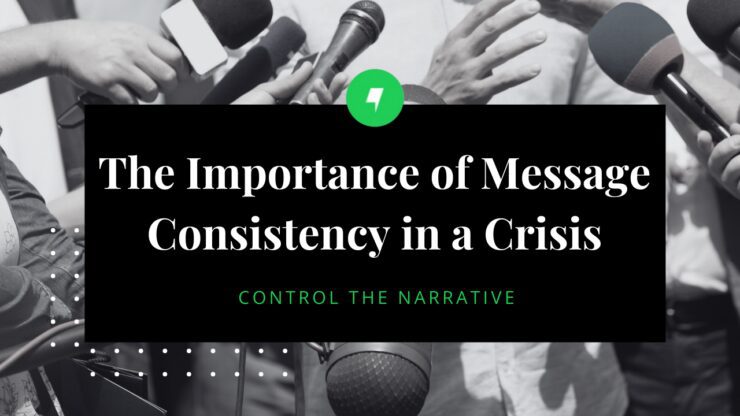Crises for businesses are often unavoidable. Preparedness is critical in preventing an issue from becoming a full-blown PR nightmare. One of the most important aspects of a crisis communication plan, and one of the first steps to execute in the plan, is solidifying key messages.
Typically, crisis key messages will address the primary concerns of the public and key stakeholders; next steps to resolve the situation or to prevent similar scenarios in the future; and reiteration of your organization’s mission and values. Key messages should convey empathy and reassurance, while remaining authentic.
Once finalized, key messages will serve as the basis for all internal and external communications, written media statements, and talking points for spokespersons. This coordinated effort will ensure a united front – regardless of medium or representative – and help your organization control the narrative as much as possible.
As an example, below, we explore a recent crisis in the NFL and how the league’s unified response helped contain the situation.
Harrison Butker’s Commencement Address
In May, Kansas City Chiefs’ kicker Harrison Butker gave a commencement speech at Benedictine College. The controversial speech received almost instant and widespread backlash. Within days, the story had reached a fever pitch and became a trending topic across social, national, and international media – with no sign of slowing down.
However, the NFL’s communications team was hard at work ensuring all of their most visible spokespeople were prepared to answer questions about the incident. From Chiefs coach Andy Reid and quarterback Patrick Mahomes to league commissioner Roger Goodell, all expressed very similar sentiments regarding the commencement address:
- Andy Reid: “We’re a microcosm of life here [in the NFL]. Everybody’s from different areas, different religions, different races. And so, we all get along. We all respect each other’s opinions. And not necessarily do we go by those, but we respect everybody to have a voice. It’s a great thing about America.”
- Patrick Mahomes: “When you’re in the locker room, there’s a lot of people from a lot of different areas of life. There’re certain things that he said I don’t necessarily agree with, but I understand the person that he is…”
- Roger Goodell: “We have over 3,000 players. We have executives around the league. They have diversity of opinions and thoughts just like America does…I think that’s something that we treasure and that’s part of what makes us as a society better.”
All three interviewees remained calm, expressed support for an individual’s right to their opinion, and positioned football as a representation of the diversity of beliefs across the nation. While this consistent messaging didn’t prevent additional headlines about the matter, it also didn’t further exacerbate a volatile media situation or extend the media cycle.
Unfortunately, even the best communications teams cannot control media coverage or prevent crises from occurring. However, steps can be taken to be prepared, ensure consistency, and limit a story’s shelf life.
Interested in reading more from the Maven team on crisis communications? Don’t miss Veronica’s “The PR Perils of Keeping Quiet” and Carly’s “How to Prepare for the Unknown.”
Posted In Crisis Communications
 Emily White
Emily White 